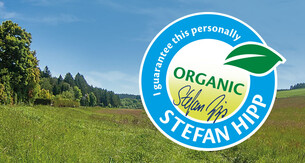
Sources:
1 https://www.heart.org/en/healthy-living/healthy-eating/eat-smart/sugar/sugar-101
2 Gunnerud, U.; Holst, J.J.; Stman, E.; Björck, I. The glycemic, insulinemic and plasma amino acid responses to equi-carbohydrate milk meals, a pilot-study of bovine and human milk. Nutr. J. 2012, 11, 83.
3 Augustin, L.S.A.; Kendall, C.W.C.; Jenkins, D.J.A.; Willett, W.C.; Astrup, A.; Barclay, A.W.; Björck, I.; Brand-Miller, J.C.; Brighenti, F.; Buyken, A.E.; et al. Glycemic index, glycemic load and glycemic response: An International Scientific Consensus Summit from the International Carbohydrate Quality Consortium (ICQC). Nutr. Metab. Cardiovasc. Dis. 2015, 25, 795–815.
4 Delaveau, P. Le lactose dans le lait; hypothese sur son importance biologique. Ann. Pharm. Fr. 2002, 61, 340–342.
5 Schaafsma, G. Lactose and lactose derivatives as bioactive ingredients in human nutrition. Int. Dairy J. 2008, 18, 458–465.
6 Meurant, G. Handbook of Milk Composition, Chapter 4. Carbohydrates in Milks: Analysis, Quantities, and Significance. Food Sci. Technol. 1995, 6, 273–338.
7 Salzman, N.H.; Underwood, M.A.; Bevins, C.L. Paneth cells, defensins, and the commensal microbiota: A hypothesis on intimate interplay at the intestinal mucosa. Semin. Immunol. 2007, 19, 70–83.
8 Romero-Velarde E, Delgado-Franco D, García-Gutiérrez M, Gurrola-Díaz C, Larrosa-Haro A, Montijo-Barrios E, Muskiet FAJ, Vargas-Guerrero B, Geurts J. The Importance of Lactose in the Human Diet: Outcomes of a Mexican Consensus Meeting. Nutrients. 2019; 11(11):2737. doi.org/10.3390/nu11112737
9 Abrams, S.A.; Griffin, I.J.; Davila, P.M. Calcium and zinc absorption from lactose-containing and lactose-free infant formulas. Am. J. Clin. Nutr. 2002, 76, 442–446.
10 Ziegler E, et al. J. Pediatr Gastroenterol Nutr. 1983;2(2):288-294
11 Paglia L., Scaglioni S., Torchia V., De Cosmi V., Moretti M., Marzo G., Giuca M. Familial and dietary risk factors in Early Childhood Caries. Eur. J. Paediatr. Dent. 2016;17:93–99.
12 Vos M.B., Kaar J.L., Welsh J.A., Van Horn L.V., Feig D.I., Anderson C.A., Patel M.J., Cruz Munos J., Krebs N.F., Xanthakos S.A., et al. Added sugars and cardiovascular disease risk in children: A scientific statement from the american heart association. Circulation. 2017;135:e1017–e1034. doi: 10.1161/CIR.0000000000000439.
13 Park S., Blanck H.M., Sherry B., Jones S.E., Pan L. Regular-soda intake independent of weight status is associated with asthma among US high school students. J. Acad. Nutr. Diet. 2013;113:106–111. doi: 10.1016/j.jand.2012.09.020.
14 Kell K.P., Cardel M.I., Brown M.M., Fernández J.R. Added sugars in the diet are positively associated with diastolic blood pressure and triglycerides in children. Am. J. Clin. Nutr. 2014;100:46–52. doi: 10.3945/ajcn.113.076505.
15 Magriplis E., Michas G., Petridi E., Chrousos G.P., Roma E., Benetou V., Cholopoulos N., Micha R., Panagiotakos D., Zampelas A. Dietary sugar intake and its association with obesity in children and adolescents. Children. 2021;8:676. doi: 10.3390/children8080676.
16 Herrick K.A., Fryar C.D., Hamner H.C., Park S., Ogden C.L. Added Sugars Intake among US Infants and Toddlers. J. Acad. Nutr. Diet. 2020;120:23–32. doi: 10.1016/j.jand.2019.09.007.
17 Belkina AC, Denis GV. Obesity genes and insulin resistance. Curr Opin Endocrinol Diabetes Obes. 2010;17(5):472–477.




